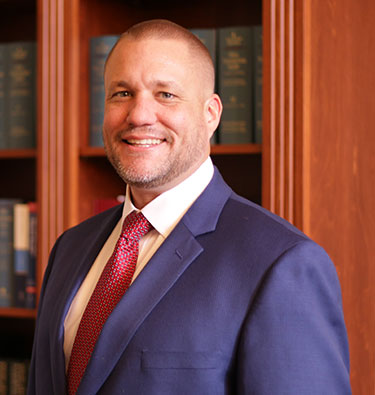
Whether you’re a new rider or a seasoned pro, it’s important to understand Ohio motorcycle laws.
While motorcycles are subject to many of the same rules of the road as cars, there are a few motorcycle laws Ohio has adopted that apply specifically to two- and three-wheeled vehicles.
Our motorcycle accident lawyers will explain.
If you were injured in an accident, please don’t hesitate to call (419) 455-1410 or contact us online for a free consultation.
Ohio Motorcycle License and Endorsements
Drivers in Ohio must have a motorcycle license or a motorcycle endorsement on their driver license to legally operate a motorcycle in the state.
Ohio law defines motorcycles as any motor vehicle with a seat for the operator designed to travel on not more than three wheels, regardless of weight or brake horsepower. Accordingly, Ohio drivers must have the appropriate endorsement for the kind of motorcycle they own.
Before obtaining a full license or endorsement, Ohio riders must first get a temporary instruction permit identification card (TIPIC).
A TIPIC is subject to several restrictions, including:
- No night driving (between sunset and sunrise);
- No passengers;
- Wearing a helmet and protective eyewear at all times; and
- No driving on interstates or congested roadways.
To obtain a motorcycle endorsement, a rider must complete a motorcycle riding course before applying. A motorcycle endorsement from another state is also valid in Ohio.
Ohio Motorcycle Passenger Laws
Ohio Revised Code § 4511.53 sets out some general rules for motorcycle passengers:
- A motorcycle may carry only as many passengers as it is designed and equipped to carry;
- All passengers must have a seat firmly attached to the motorcycle; and
- Passengers must ride facing forward with one leg on each side of the motorcycle.
Additionally, as mentioned above, passengers are not allowed to ride with riders licensed only with a TIPIC.
Ohio Motorcycle Helmet Laws
Motorcycle laws in Ohio do not generally require helmets for adult motorcycle riders. However there are two exceptions in addition to the TIPIC restriction mentioned above.
Ohio helmet laws require riders to wear a helmet:
- If they are under 18 years of age; and
- During the first year they have obtained the motorcycle license or endorsement.
The Ohio Bureau of Motor Vehicles designates riders as “novice” for the first year after they obtain an endorsement. As long as riders have the novice designation, they must wear a helmet even if they are over 18.
Even though Ohio does not require helmets for most riders, wearing one is a smart choice. Injuries in motorcycle accidents are often more severe because the rider has much less protection compared to the driver of a car.
Eye and Hearing Protection
Ohio motorcycle laws require riders to have eye protection. Valid eye protection includes a helmet with a visor, sunglasses, or a windscreen.
Riders may also choose to wear earplugs or earphones, though they may be used only to protect the rider’s hearing; using headphones to listen to music while driving in Ohio is generally illegal.
Lane Sharing and Lane Splitting
Lane sharing is when multiple motorcycles ride near each other in the same lane. Ohio Revised Code § 4511.55 permits motorcycles to share a lane in a “two wide” formation. In other words, riders in Ohio may not ride next to more than one other rider in the same lane.
Lane splitting is when a rider drives on the line between the lanes to pass between other vehicles moving in the same direction. Just like all other states except California, lane splitting is illegal in Ohio.
Should I Hire a Motorcycle Accident Attorney?
If you or a loved one is injured in a motorcycle accident, an attorney may be able to help you recover damages for injuries and medical expenses. If you are facing severe injuries, long recovery, and extensive medical bills, it’s appropriate to contact an accident attorney for help with your case.
Why It’s Important to Understand Ohio Motorcycle Laws
In addition to making you a better driver, knowing motorcycle laws in Ohio can have a significant impact on your damages. Ohio uses the “comparative fault” model of contributory negligence to determine fault after an accident. Under this model, a plaintiff can recover compensation as long as they were no more than 50% at fault for the accident.
If you are injured in a motorcycle accident, how well you followed Ohio’s motorcycle laws could affect your ability to recover damages. Lane splitting, speeding, or not wearing a helmet when required can all affect your percentage of fault.
Contact Our Ohio Motorcycle Accident Attorneys
Bensinger Legal Services takes a client-focused approach to serve Ohioans across the state in accident injury cases involving motorcycles and other motor vehicles. Contact us today by filling out our form or giving us a call at (419) 455-1410 for a free case review.


